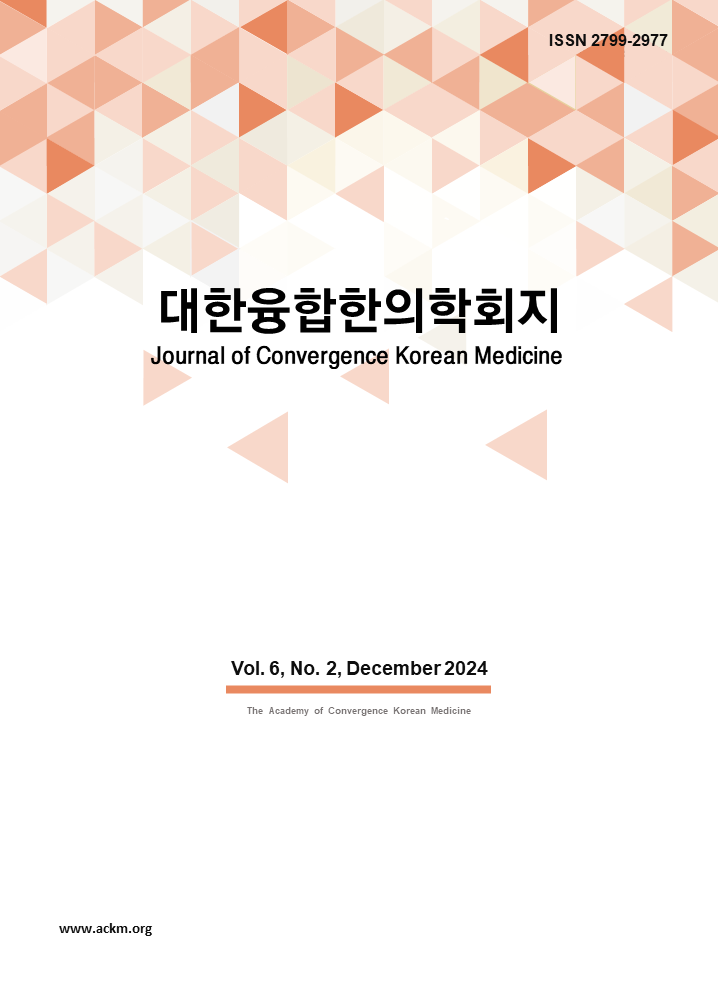2권 1호
초록
Abstract
Objectives: The purpose of this study is to fabricate an ultra-fine ginsenoside particle atomizer that can provide a new treatment method by delivering ginsenoside components that have a therapeutic effect on respiratory diseases directly to the lungs. Methods: We fabricated the AAO vibrating mesh by using the micromachining process. The starting substrate of an AAO wafer has a 350nm pore diameter with 50㎛ thickness. A photomask having several 5㎛ opening holes with a 100㎛ pitch was used to separate each nanopore nozzle. The photoresist structure was optimized to pattern the nozzle area during the lift-off process precisely. The commercial vibrating mesh was removed from OMRON's NE-U100 product, and the fabricated AAO vibrating mesh was installed. A diluted sample of 20mL with 30% red ginseng concentrate was prepared to atomize from the device. Results: As a result of liquid chromatography analysis before spraying the ginsenoside solution, ginsenoside components such as 20S-Rg3, 20R-Rg3, and Rg5 were detected. After spraying through the AAO vibrating mesh, ginsenosides of the same component could be detected. Conclusion: A nutrient solution containing ginsenosides was successfully sprayed through the AAO vibrating mesh with 350 nm selective pores. In particular, during the atomizing experiment of ginsenoside drug solution having excellent efficacy in respiratory diseases, it was confirmed that atomizing through the AAO vibrating mesh while maintaining most of the active ingredients was carried out.
초록
Abstract
Objectives: Atopic dermatitis (AD) is an easily recurrent inflammatory skin disease. Since AD has complex pathology, people have been investigating it on different aspects with various experimental models. One of them is in vivo model which has spontaneously developed AD-like skin lesions by various inducers. Methods: In this study, two kinds of mouse species were applied in the experiment; BALB/c and C57BL/6 mice. We compared features among the animal species making AD mouse model with protein allergen, ovalbumin. AD-like skin lesions were induced by ovalbumin on two kinds of scheme and were evaluated with the histological results and size of spleen which is a critical immunological organ. Also, we measured the level of immunoglobulin E in serum. In addition, we investigated the results of ovalbumin induced-AD-like skin lesions along with obesity. Results and Conclusion: We evaluated weight of organs and thickness of epidermis. These results suggest the possibility of the appropriate in vivo experimental model for AD or the comorbidity with obesity.
초록
Abstract
Objectives: This study aimed to review the effects of Daoyin exercise on scoliosis in clinical studies. Methods: In this study, we reviewed 9 electronic databases (Pubmed, CAJ, EMBASE, Cochrane Library, CiNii, KISS, KMBASE, OASIS, ScienceON) on May 22, 2021. We included only randomized controlled trials (RCTs) which evaluated the effect of Daoyin exercise on scolisos. The methodological quality of the included studies was checked using the Cochrane risk of bias tool. Results: After screening, eight RCTs fulfilled the inclusion criteria. The results of the meta-analysis showed that Daoyin exercise improves the measurement value of Cobb's angle, SRS-22, pulmoary function, physiological curvature, muscle strength, effective rate in scoliosis patients. Conclusion: We concluded that Daoyin exercise has therapeutic effects in relief of imbalance, improvement of symptoms, improvement of function, muscle strength for scoliosis. However, the quality of the original articles was low and the number of papers included were few. Thus, to confirm these results, further well-designed RCTs should be conducted.
초록
Abstract
Objectives: To investigate the characteristics of topical agents including natural products using for atopic dermatitis treatment via a review on the cases and clinical trials. Methods: Through a search on Pubmed, EMBASE, Cochrane library, DBPIA, NDSL, and OASIS, we selected papers that applied natural products externally for atopic dermatitis and analyzed them. Results: Finally, Seventeen papers were selected. As the primary outcome, changes in the SCORAD and EASI, were the most used. The most frequent type of external formulation was cream. In terms of the frequency of use, it was used at least twice a day in all studies. When evaluated based on SCORAD, EASI, SH and TEWL, the improvement effect on atopic dermatitis was highest when the ointment formulation and the moisturizer formulation were used. A few side effects of topical agents including natural products were observed, but most were mild symptoms and no serious side effects occurred. Conclusion: This study is meaningful in that it has drawn a significant trend for studies that have been published in the last 5 years that contain a single intervention for topical agents including natural products, and that it presents the direction and evidence for the application of external therapy to increase the therapeutic effect of atopic dermatitis.

